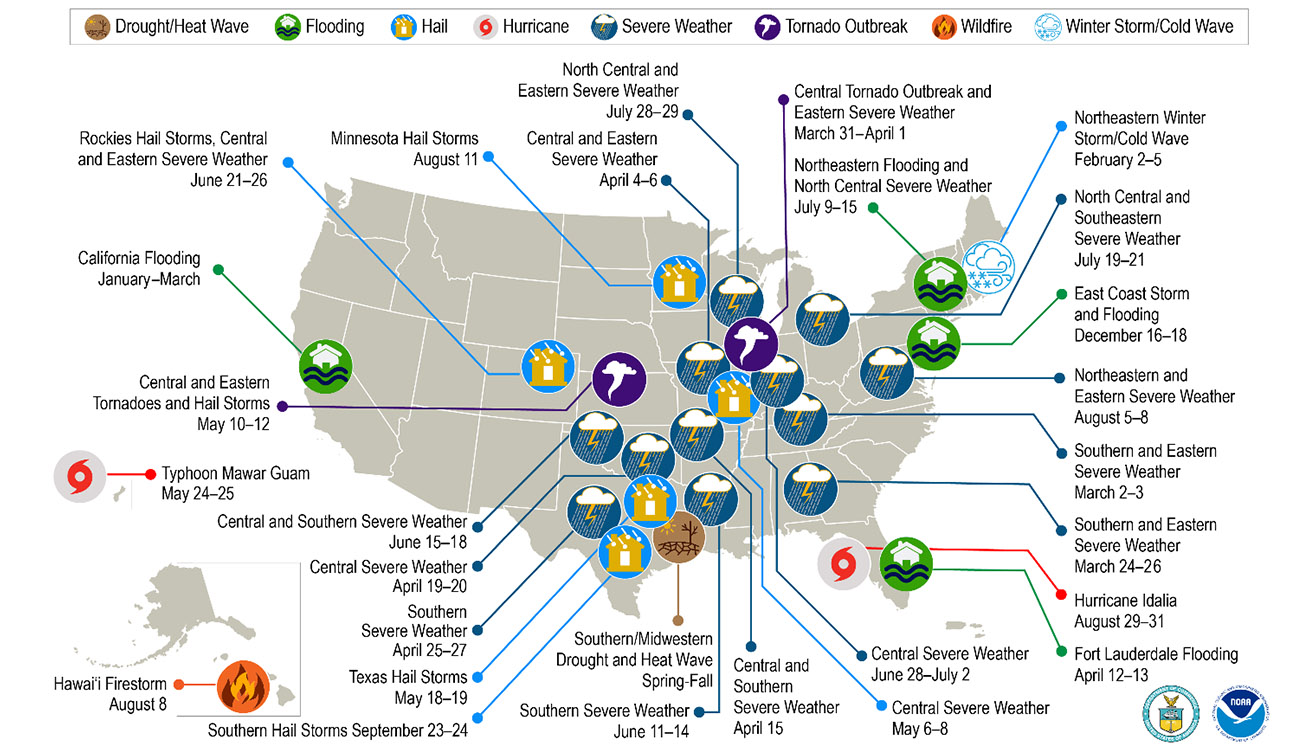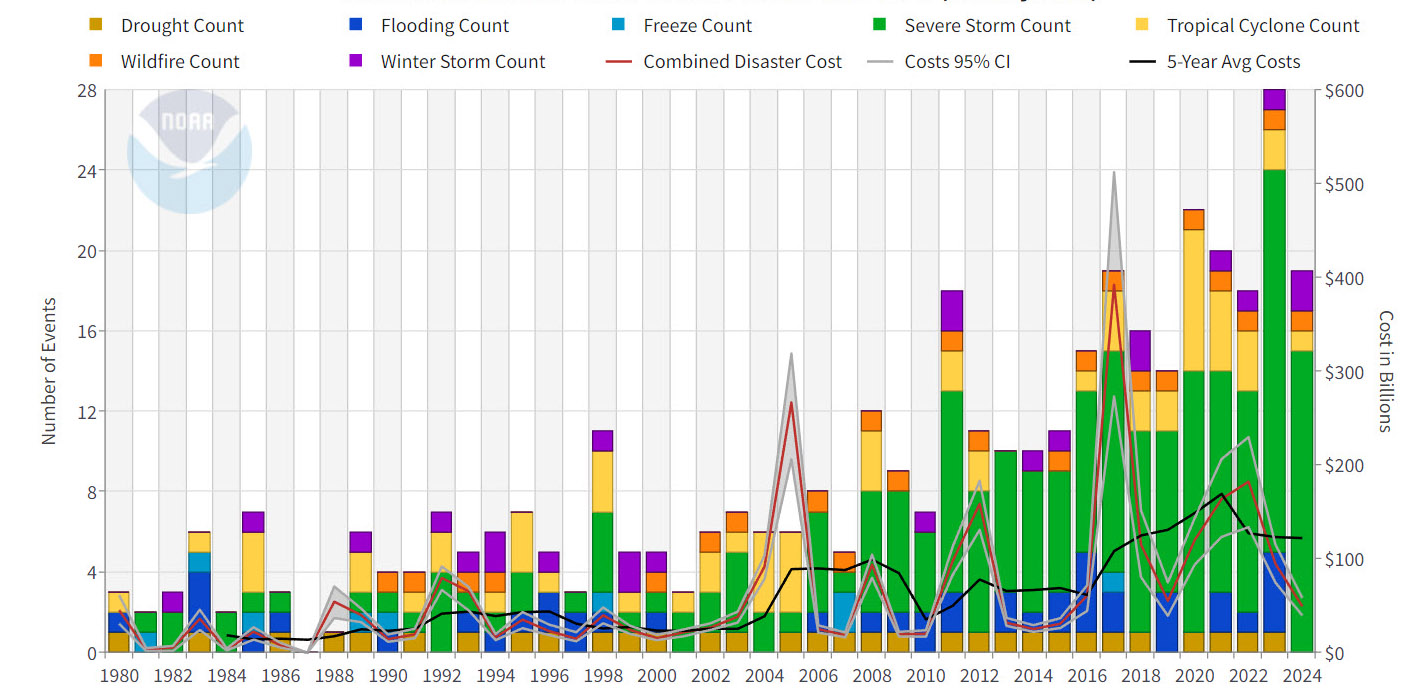There’s no denying the heartbreak we feel when climate disasters devastate communities around the world. Yet we also find hope in what often follows: an outpouring of giving. In the last few years, amid ongoing recovery from the pandemic and record-breaking climate events, we saw high levels of philanthropy focused on climate change mitigation in 2022.1,2 When we direct donations to the communities harmed by climate disasters, we help them recover, rebuild, and adapt for the future.
If we are thoughtful about these contributions, we can help build resilience by ensuring that affected communities have more reliable recovery funding—not only immediately after an adverse event, but in the time afterward that it can take to re-establish themselves. Let me explain how.
An estimated $7.8 billion to $12.8 billion in philanthropy
focused on climate change mitigation in 2022.2
The importance of thoughtful, intentional planning
Many donations following disasters are unplanned, emotional reactions to communities in need. There is a special joy in—and great need for—spontaneous generosity. But these donations do not have to be separate from the philanthropic strategy we have in place that services our community and the intentional impact of our grant-making. Being strategic with one’s philanthropic endeavors—as opposed to just reactionary—incorporates intentionality and impact to enable systemic change.
That long-term thinking is so important. Hurricanes, floods, and wildfires are unpredictable, but what we can expect is to see more of them. With this in mind, we should consider how thoughtful planning can help direct giving to climate-impacted areas in a more sustainable way.
To make a meaningful contribution to climate resilience, we must rethink our long-term, strategic giving to complement our more responsive philanthropic endeavors. As you review your previous gifts and begin to evaluate how to allocate your charitable resources in the future, consider funding a dedicated disaster relief fund with a portion of your philanthropy budget.
Here are six things to consider when developing a disaster relief funding plan that can help communities build climate resilience and maximize your impact:
1. Understand the scope of the need
Better understanding the scale and patterns of recent disasters across the United States can help you decide where to direct your giving, how much you’d like to give, and when. In 2023, the US experienced 28 natural disasters that led to damages of $1 billion dollars or more, as depicted below.3
U.S. 2023 Billion-Dollar Weather and Climate Disasters

This map denotes the approximate location for each of the 28 seperate billion-dollar weather and climate disasters that impact the United States in 2023
National Centers for Environmental Information U.S. Billion-Dollar Weather and Climate Disasters
Over the last 30 years, both the number of disasters and the cost of the damages on an inflation-adjusted basis have been increasing. The costs of major natural disasters can be higher during the second half of the year due to a number of factors, from Atlantic hurricane season (June 1 to November 30)4 to peak wildfire season (July and August in the Northern Hemisphere)5. As you plan to support disaster relief, you may find more resources are needed in these months.
United States Billion-Dollar Disaster Events 1980-2024 (CPI Adjusted)

Updated: May 8, 2024
Source: https://www.ncei.noaa.gov/access/billions/state-summary/US
2. Purposefully allocate disaster relief funds
When you allocate resources for the year, have a conversation with those involved in your giving around disaster relief funding. Determining in advance how much to dedicate to this purpose will ease the process of allocating those resources as incidents happen throughout the year. It will also enhance decision-makers’ confidence, knowing the funds have been set aside for this important purpose.
During these conversations, consider putting parameters around how much to give to any one disaster, so there is pre-established guidance when it's time to make decisions.
3. Do your due diligence on nonprofits now
When there are significant funds involved, it can unfortunately attract questionably-intentioned opportunists operating under the guise of doing good. By doing due diligence in advance on organizations focused on disaster relief early, you can be more confident that your funds will be used effectively and will yield positive results.
Ask organizations to send you information on how they approach disaster relief, what makes them different, and what impact they have made in the past. Having the organization complete a formal grant application can provide decision-makers with more information and help make side-by-side comparisons, giving them more confidence in their decisions.
4. Create a short list of approved organizations
Once you have compiled the names of a few organizations that align with your funding values and do effective work in disaster relief, include them on a short list of vetted and approved organizations for immediate funding. This preparation will enable you to deploy funds in a timely manner and with the confidence that your funds will be used wisely.
5. Plan repeat gifts to climate-impacted communities
The intensity and rapid scaling of disaster-relief giving happens within days after the event occurs, because we see people on our screens that need our help and they are in desperate circumstances. This drives response-based giving in the short-term, but it lacks the vision for the community’s long-term recovery and sustainability.6
As time goes by, the local community itself will likely have the best insight into what still needs to be done to get its residents stabilized and productive. For the second round of funding, consider a local community foundation, because they will likely best understand the need going forward.
6. Consider aligning your investments with disaster relief
It’s prudent to consider how you might be inadvertently profiting from organizations contributing to climate change. If you are a shareholder of or a lender to organizations that do not have a strategic plan to be environmentally friendly or carbon-neutral, you could find yourself profiting from poor environmental policies in your investment portfolio while supporting recovery efforts from natural disasters. Aligning your investments with your philanthropy can increase your ability to make a sustainable impact on our planet and its inhabitants.
The Sustainable Investment Forum (US SIF) identified $8.4 billion in
total U.S. sustainable investment assets under management
in 2022 -- 13% of total U.S. assets under management.7